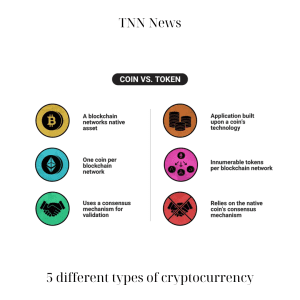The Polygon network, which used to be called the Matic network, is a scaling protocol for Ethereum that lowers costs and improves security. In a short amount of time, Polygon has gotten a lot of attention.
Polygon is different from other scaling projects for Ethereum because it offers a number of solutions on a single network. It gives developers the tools they need to figure out how to scale their apps in the best way. Polygon Labs has been working hard to come up with scaling solutions based on plasma sidechains, a blockchain bridge, different types of zero-knowledge proofs, and Optimistic Rollups.
Processing big groups of transactions on the Polygon proof-of-stake (PoS) blockchain makes the Ethereum main chain much less busy, which speeds up transactions. The Ethereum base layer can handle about 14 transactions per second, but Polygon could be able to handle a lot more.
Anyone who wants to change the system’s transactional data and be a part of the network must stake Polygon (MATIC). In the Polygon network, a validator’s job is to make sure the network is safe and add transactions to blocks. Validators put up money, which lets users delegate tokens in exchange for rewards, less any fees charged by validators.
Staking MATIC on the line, explained
To stake MATIC, you have to give tokens to a validator. People who bet can win prizes for the money they risk. At the moment, there are no minimum requirements for betting, but validators can decide what the lowest amount of betting that is acceptable is. Validators might charge fees or take a cut for these services. For locked MATIC tokens, it takes 80 checkpoints, or about three to four days, to get them out. All a holder has to do to leave is send a “unbound request.”
Think about how trustworthy a validator is before you give them money. On the Polygon staking dashboard, you can learn about validators and see metrics like the number of active validators, their uptime, commission, and the amount needed to stake. These metrics are useful tools that can help you choose validators you can trust:
- Uptime refers to the number of blocks signed in a specific time period. A validator’s uptime should be close to 100%. Otherwise, it indicates the validator is unreliable, as reflected in their public performance metrics.
- Commission rate is the percentage of one’s rewards the validator receives for their services.
- The stake amount indicates the total number of tokens delegated to a validator.
How to put MATIC at stake on MetaMask
MetaMask is a wallet for cryptocurrencies that works with the Ethereum blockchain and is not run by a single organization. The wallet is available as a mobile app and as an add-on for Google Chrome, Brave, Firefox, Opera, and Edge.
Here’s how to stake MATIC with MetaMask:
Step 1: Add MetaMask as an add-on to your browser.

To stake MATIC on MetaMask, users need to go to the MetaMask website and set it up as a browser extension. Just click “Download.” One can choose between the browser that is currently being used, iOS, and Android. To add MetaMask to your browser, click the “Download” button.
Step 2: Make sure MetaMask is connected to the Polygon blockchain.
MetaMask works with a number of blockchains. Go to “Networks” and click “Add network” to connect MetaMask to Polygon. When the window pops up, users must fill in information about the Polygon blockchain.

Step 3: Transfer MATIC tokens to MetaMask.
To send MATIC tokens to the MetaMask wallet, copy the wallet’s address and use it as the destination address on an exchange or in another wallet. Now, transfer MATIC tokens to MetaMask.
Step 4: Link MetaMask to the Polygon Wallet.
Click “MetaMask” on the link below to connect MetaMask to the Polygon wallet. https://wallet.polygon.technology/
Step 5: Stake MATIC via MetaMask.
Staking is made possible once the connection is made.
Step 6: Delegate MATIC.
Choose a validator that will be given tokens.

To stake, you need to use the control panel. Click the “Apps” button and then choose “Staking.” Type the name of the validator into the search bar and then click “Delegate.” Next to the validator’s name, you can see all of the important information, such as the number of tokens bet, the uptime, and the amount of commission.
Enter the MATIC stake amount and click “Continue.” Click “Confirm” in the pop-up extension window. Depending on how much traffic there is, the transaction could take a few minutes to finish.
Users must buy a voucher and pay for gas in order to make a transaction, stake MATIC, and start getting rewards. Click “Buy Voucher.” Details like the gas limit and price must be given, and the transaction must be confirmed again.
Now, delegation is done. The control panel lets users “Bet more” or take their rewards. But keep in mind that Ether is used for all transactions on the Ethereum network (ETH). So, the person who delegated must have enough ETH in their wallet to pay for the transactions.
How to put MATIC into your Coinbase wallet
To stake MATIC on Coinbase, users must use a wallet because the exchange doesn’t have a stake feature. If a user has money on the exchange but not in their wallet, they will need to move the money to their wallet. Even though staking isn’t built into Coinbase Wallet, there is a way to do it.
Here are the steps you need to take in order to stake MATIC on Coinbase Wallet.
Step 1: Install Coinbase wallet.

Put the Coinbase Wallet app on your phone. If it’s an iPhone, go to the Apple App Store. If it’s an Android, go to the Play Store.
The process includes making a new wallet, agreeing to the terms of service, choosing a username, setting privacy preferences, making a passcode, and backing up the wallet with a recovery phrase that can be used to get into the account if the user forgets the passcode.
Step 2: Put money into your wallet.
Open the wallet and look on the right side of the bottom. Tap there, and then drag your finger down the screen that comes up. There will be a link that says “Connect to Coinbase.” If you click on the link, it will ask for permission. Once this is done, the user’s wallet will connect them to their wallet.
Click “Buy or move.” When the exchange asks which coin you want, choose “MATIC wallet.” Users can now type in the amount of coins they want to send. The wallet will ask for a code to make sure it’s you. Once the money has been successfully deposited, it will be moved. On the Coinbase exchange, MATIC tokens are ERC-20 tokens, which means that they run on the Ethereum network.
Step 3: Stake MATIC.

Go to the website for Polygon. Click “Use Polygon” and “Staking” on the top menu. Click “Become a delegator” on the next page.

The user is sent to a page with a list of validators and information about each one. By clicking a drop-down menu on the right side of the page, you can sort the list by performance, commission, stake, or random. The validators can be seen as a grid or as a list. They can also use a search box on the left to look for a certain validator.
When a user clicks on one of the validators, they are taken to a page with more information about that validator, such as how much MATIC was bet, how much commission was asked, how many checkpoints were signed, and how healthy the user is. Users can look at the list and click on any validator they want.
On a different page, more information about the validator is shown. This includes how much MATIC is in their Ethereum wallet and how much it’s worth in dollars. It also shows their stake, heimdall fee, rewards earned, performance index, signed checkpoints, and more. Heimdall fees are the fees that the validator has to pay to send checkpoints through the Polygon network.
The user must log in by clicking the button in the top right corner and using their credentials. Users who don’t have a Polygon account must make one and click “Become a Delegator.”

Users must enter the number of MATIC coins they want to give away and then click “Continue.” A pop-up shows up when the user clicks “Continue.” To finish the process, the user needs to tap the “Delegate” button.
How to use Trust Wallet to stake MATIC
Trust Wallet is a mobile app wallet for storing, exchanging, and transferring crypto assets that is not controlled by a central authority. To stake MATIC on Trust Wallet, do the following:
First, make a Trust Wallet.
Install the Trust Wallet app on your phone. Choose the operating system you want to use (iOS or Android) and then install the app.
Users who have already used Trust Wallet must import their wallet. If not, they will have to make a new wallet. Click “I already have a wallet” and confirm a six-digit passcode to import an existing wallet.
If a user has never used the wallet before, they must read the privacy policy and terms of service and agree to them. They must also create and confirm a six-digit passcode and back up the wallet with a recovery phrase.
Trust Wallet lets you store more than one coin in a wallet, but a multicoin wallet is usually best. Since MATIC staking takes place on Ethereum, you need to have enough ETH and MATIC on the Ethereum mainnet.
Step 2: Link Polygon to Trust Wallet.
Sign in to Polygon’s dashboard for staking and click “Become a Delegator.” Choose “WalletConnect” from the list of wallets to connect to Trust Wallet on Polygon. The screen will show a QR code.

Go back to the Trust Wallet app, click on “Settings,” and then click on “WalletConnect.” Click “New Connection” to make a new link. Scan the QR code on the stakes dashboard for Polygon. To make the connection, click “Confirm.”
Step 3: Assign responsibilities and give approval.
Click “Delegate” after you have chosen the validator. Put in the number of MATIC coins you want to bet, and then click “Continue.” Confirm the smart contract call in the Trust Wallet app to approve the transaction.
Go back to the dashboard for Polygon staking and click “Delegate.” In the Trust Wallet app, confirm yet another call to a smart contract. Delegation is now up and running, and users can start to earn rewards.
How to use Ledger to stake
Ledger is a device that many people use to store cryptocurrencies. One needs to get ready for staking MATIC with Ledger.
Step 1: Prepare for staking.
The first step is to use the link https://www.ledger.com/ledger-live/download to update Ledger Live to the most recent version.
Connect the Ledger device to “My Ledger” and update the ETH app on the Ledger device to the latest version. Turn on blind signing in the settings for the ETH app. Close Ledger Live when you’re done getting ready, or you might run into trouble when using MetaMask.
Users also need to make sure that their MATIC is stored in the Ledger Ethereum account and not in the Polygon account, since MATIC staking happens on the Ethereum network.
Step 2: Link MetaMask to your Ledger ETH account.
Connect the Ledger to your computer and open the ETH app on your computer. Now, connect the ETH account on Ledger to MetaMask.
Go to the Polygon Wallet app once the connection is set up.
Follow these steps to link your Ledger Ether account to MetaMask.
After that, go to the Polygon Web Wallet app and choose “Connect to a Wallet” and then “MetaMask.”
When MetaMask opens in your browser, choose the Ledger account, click “Next,” and then “Connect.” Ledger displays “Sign message.” Select “Sign message” and press both buttons at the same time to confirm. Now, the Polygon Wallet app is linked to MetaMask.
Step 3: Select a validator.
Choose “Staking a Polygon.” In the top-right corner of the app, click “Login” and choose MetaMask again.
Choose from the list of validators that appears. Users need to think about two things: a high “Checkpoint signed” score and a low “Commission” score.
Step 4: Delegate.
Click “Delegate,” type in how much MATIC you want to bet, and click “Continue.” “Give permission to access your MATIC?” shows up on MetaMask.
Check the amount of the fee. If it seems right, click “Confirm.” “Review transaction” is now written on the ledger.
To “sign the transaction,” choose “Accept and send” and press both buttons at the same time. “Application is ready” is now shown on the Ledger.
Go back to the Polygon Web Wallet App, choose a validator, and click “Delegate.”
The MetaMask and Ledger devices can be used to look over the transaction and confirm it. When the Ethereum network confirms the transaction, “Delegation Completed” will show up on the screen.
How to use a ZenGo wallet to stake MATIC
ZenGo is a wallet that works with itself. It works with WalletConnect and has no holes in the seed phrase. Let’s go over how users can use a ZenGo wallet to stake MATIC.
Step 1: Get the ZenGo wallet app for your phone and install it.
Visit the ZenGo website, choose either iOS or Android as the operating system, and install the app on the phone. One can scan the QR code to speed up the search.
Open the ZenGo app, type in an email address, and tap “Continue” to move forward. The user has to confirm their email address before they can use ZenGo. Tap “Open My Email” in the ZenGo app to get to your inbox, then tap “Tap to Confirm” in the email you get to confirm. After verifying your email address, turn on biometrics to make the app even safer.
Make a Recovery Kit to keep your money safe and make it easy to get to when you switch devices. As a wallet that doesn’t hold your money, ZenGo shares an encrypted secret key. Part of the key is stored on the device, so you can use the wallet by scanning your face to open it. Tap “Done” when you’re done making the Recovery Kit.

Step 2: Connect ZenGo wallet to Polygon.
Users need to connect the ZenGo wallet to Polygon. Open the link https://staking.polygon.technology/
Go to the Polygon staking dashboard. In the upper right part of the screen, tap “Login.”

Tap WalletConnect from the list of connections that are available. With the WalletConnect protocol, you can link ZenGo to Polygon. There will be a QR code.
Tap the “Connect to Apps” button in the top right corner of the ZenGo wallet homepage. Look for the QR code.
Step 3: Select a validator and delegate MATIC.
Now, the process of giving MATIC tasks starts. Since the delegation happens on the Ethereum mainnet, make sure you have MATIC in ERC-20 and 0.05–0.1 ETH for fees.
Scroll down on the Polygon staking dashboard to see information like an overview of the network, active validators, how much they have staked, uptime, commission, how much they have staked, and health metrics.
After you’ve thought about the metrics, choose a validator and tap “Delegate” at the bottom right of the screen.
Users must enter the amount of MATIC they want to bet in the pop-up box and then tap “Continue.” You can bet from as little as 1 MATIC. To confirm the transaction, go back to the ZenGo app and click “OK” in the window that pops up.
Go back to the Polygon dashboard for staking and tap “Delegate.” You can confirm the transaction in the ZenGo wallet and wait for it to be approved.

When delegation is turned on, the user will start to get rewards. At each checkpoint, you get more rewards.
The “My Account” section of the Polygon staking dashboard is where you can find your rewards. Users can also unstake, stake to more than one validator, or restake funds. For users to cash out their rewards, they must have at least 2 MATIC in their account.
The way forward
The Polygon protocol is a solution that helps Ethereum grow in size, security, efficiency, and use cases. It is a well-known layer-2 network. MATIC helps the system run because it is the unit of payment and settlement in the network. The Matic network went live in 2020. In February 2021, it changed its name to Polygon, and developers are now using it to build decentralized apps that work with Ethereum.
The Polygon protocol was a big part of making Ethereum usable and getting the blockchain out of the mess it was in after its rapid growth. Transactions got stuck for hours because they couldn’t be scaled up, and the cost of completing a transaction was often more than the amount of the transaction itself. With the Polygon protocol, Ethereum has become a full-fledged multichain system that still has the benefits of Ethereum’s decentralization and activity.
MATIC token is here to stay and is becoming an even more important part of keeping the Ethereum ecosystem running. Staking, on the other hand, will be a way to make sure that the network is run well and is safe.





